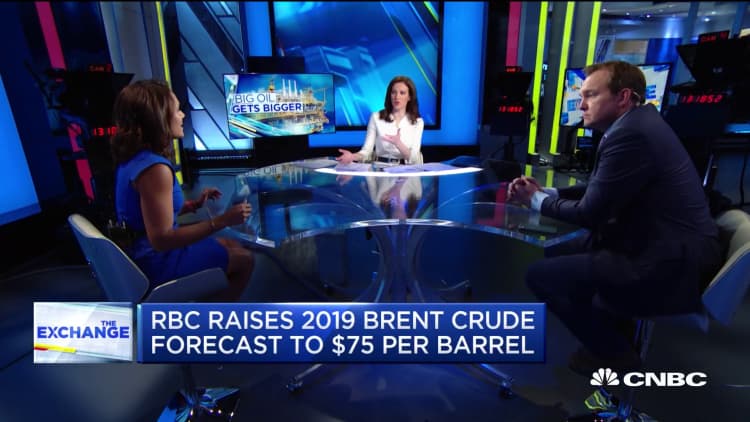Oil prices fell on Monday after Russia's finance minister said Russia and OPEC may decide to boost production to fight for market share with the United States, where output remains at record highs.
Losses were limited by a tightening of global supplies, as output has fallen in Iran and Venezuela amid signs the United States will further toughen sanctions on those two OPEC producers. Renewed fighting also threatened to wipe out crude production in Libya.
U.S. West Texas Intermediate crude futures settled 49 cents lower on Monday at $63.33 per barrel, dropping nearly 1%. WTI touched a five-month high at $64.79 last week.
Brent crude oil futures fell 37 cents to $71.18 a barrel, having hit their highest since Nov. 12 on Friday at $71.87.

Oil prices have been lifted by more than 30 percent this year, mainly due to a deal by OPEC and its allies including Russia, known as OPEC+, to curb by 1.2 million barrels per day from Jan. 1 for six months. The group will meet in June to decide whether to continue withholding supply.
Russian Finance Minister Anton Siluanov said over the weekend that Russia and OPEC may decide to boost production to fight for market share with the United States, but this would push oil as low as $40 per barrel.
"There is a dilemma. What should we do with OPEC: should we lose the market, which is being occupied by the Americans, or quit the deal?" Anton Siluanov, speaking in Washington, said, TASS reported.
"(If the deal is abandoned) the oil prices will go down, then the new investments will shrink, American output will be lower, because the production cost for shale oil is higher than for traditional output."
While the minister said he did not know whether OPEC countries would be happy with this scenario, the group's de facto leader, Saudi Arabia, is considered keen to keep cutting, but sources within the group said it could raise output from July if disruptions continue elsewhere.
"OPEC+ production cuts have been the main source of price support this year but ... excess Saudi production capacity is acquiring a greater focus that will be creating a greater caution amongst prospective buyers," Jim Ritterbusch, president of Ritterbusch and Associates, said in a note.

Oil prices have faced pressure from a surge in U.S. crude output, which is at a weekly record of 12.2 million bpd, thanks to a shale revolution.
The U.S. drilling rig count, an indicator of future production, last week rose for a second week in a row.
"I would expect oil to trade in a relatively tight band around $70 per for the time being," said Virendra Chauhan, oil analyst at Energy Aspects in Singapore, pointing to differing signs from the United States and OPEC on future supply.
On the bullish side, the head of Libya's National Oil Corp warned on Friday that renewed fighting could wipe out crude production in the country.
Production has been also falling steeply in Venezuela due to U.S. sanctions. Iranian output is expected to suffer when the United States tightens sanctions on Tehran in May.
— CNBC's Tom DiChristopher contributed to this report.

